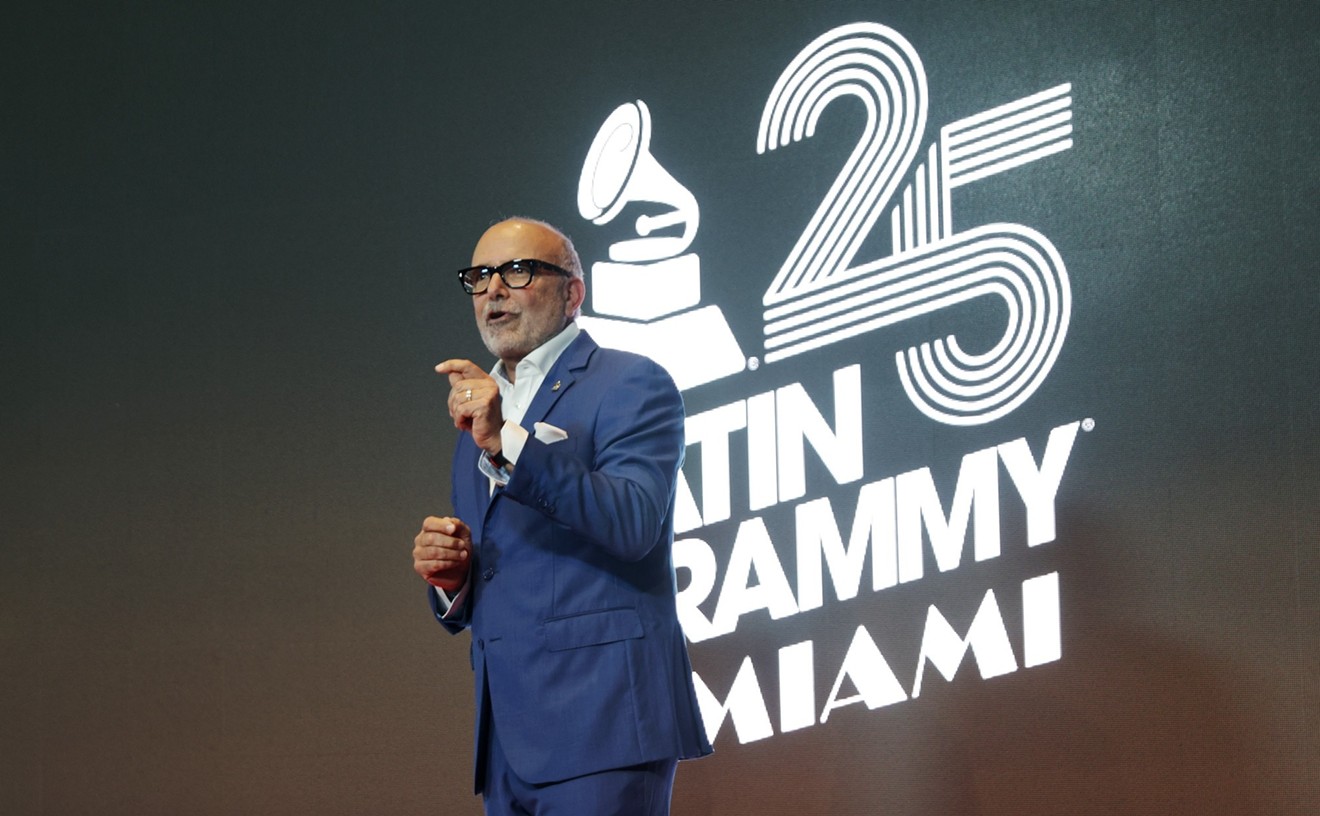Funk moved to South Florida from Bloomington, Indiana, in 1972. Working closely with the old Musician's Exchange, he organized and promoted jazz and blues concerts in Fort Lauderdale throughout the early '80s. In 1988 he opened his first club -- Funky's Jazz Cafe -- on East Sunrise Boulevard in Fort Lauderdale. Funky's closed less than two years later. "I found out the hard way you can't make a living selling wine and beer," Funk recalls with a laugh. Nonetheless, in partnership with visual artist Rene Gordon, he immediately opened another club -- destined to close within a year -- on the south side of the New River, called Riverwalk Jazz. "The problem with that one," he recalls, "was there was no Riverwalk yet." Fortunately Funk's interests were not limited to the openings and closings of jazz clubs. He had launched Funkadero Records in 1984. For the next ten years he utilized various studios in the region to record music for his label. Finally in 1994 he made a substantial financial investment and transformed half of his house into Funkadero Recording Studio.
Funk's love of jazz music and his deep appreciation of jazz artists are rooted in his Indiana childhood. "My family has always been involved with music," he says. "My mother was the family leader, and she supported three of us with music in Bloomington, Indiana. She was a self-taught piano player, and she worked all around town, playing dances, nightclubs, fairs, and functions at the nearby Indiana University. She and her three brothers were a group. They started in the church playing gospel music, but they really loved to play jazz and the popular music of the day, the big bands, Hoagy Carmichael, people like that. But whatever they played swung, and that's what I remember most."
His close, early association with the creative process of making jazz music lies at the heart of Funk's mission. When asked why he is so committed to documenting jazz as opposed to other, more lucrative styles of music, he says jokingly, "My daughter asked me about the success of the business and about jazz, and I told her that the way it works is you record all you can and make the most excellent product that you can document, and then you die and someone else makes money off your work.
"But seriously," he continues, "it isn't about money. I'm like other people; I'd like financial success to come with [my work], and I feel in time it will. But your creativity goes out the window when you're thinking about the money before you're thinking about the art."
Funk deals with a select group of artists. He views himself as their enabler and facilitator. His goals are to provide the stage and to create opportunities for jazz musicians to perform at their highest possible levels. To expedite the process and document the results, he has created a space in his home studio within which the artist can feel free. Welcome to what Funk calls "the comfort zone."
He decided to convert his home into a professional recording studio after much thought and carefully considering the costs. Ultimately his decision to go ahead with the project was motivated more by his commitment to jazz than by his wish for financial reward. "As far as music is concerned," he says, "I feel that jazz is synonymous with quality and excellence. Among musicians jazz artists are the cream that rises to the top. I was committed from the start to focusing on jazz. Once the digital aspect of recording equipment came on the market and brought the cost down, I decided to convert part of my house into a studio."
From the outside you would never know that the typical Florida-style house located on a quiet street in Fort Lauderdale is the home of the Funkadero sound. Inside, the house is split roughly in half lengthwise. One of those halves is living space; the other is office, studio, and recording space. The studio, which used to be a living room, is completely soundproof. On the floor rests a beautiful-sounding K. Kawai grand piano that used to be in the Musician's Exchange. The control room, also soundproof, is dominated by a Mackie 32-track recording console. CD recorders, DAT machines, compressors, and 24-track ADAT recording machines are stacked neatly in racks to one side. A comfortable couch lines a wall, providing a great place to listen to the sounds coming from the studio. A hallway that connects the front office to the studio and another hallway that connects the studio to the control room are used as isolated recording areas.
Duffy Jackson, whose 42-year career as a dynamic jazz drummer and bandleader includes recording stints with the Count Basie Band, guitarist George Benson, the Manhattan Transfer, and many others, is one of those select artists who have experienced the difference of recording in the comfort zone. "I had visited my friend Nick's home many times before he built the studio," Jackson says, "and I always felt that when the studio was finished I would want to record there. Now I've had the opportunity to record several projects there, and it is a very different feeling when you are in Nick's home compared to the usual commercial studios. First of all the atmosphere and ambiance is conducive to spontaneous creativity. I don't feel that pressure and tension that are so much a part of the usual recording sessions…. Nick's attitude and the environment of his studio inspires you to create at your best. A big part of the success of the projects I've done there is the engineering and mixing of Nick's nephew, Josh Rummler. The fact that he's related to Nick just enhances the family feeling in the house."
The Funkadero sound is the result of the setting of the studio, the equipment, and of course, the intangible touch of Funk himself. "You don't think about your signature being on something," he says, "but it does happen because of the choices that you make, the artists that you work with, the way you like to set levels and place microphones, and the ambiance of the session. It's not conscious, it just seems to happen."
One of the key elements of the Funkadero sound is the "live" feel that Funk captures in the studio. "Everybody in jazz wants that live feeling on their CDs," he says. "When they play live in front of an audience, that energy is there, but when they get in the studio and you start recording in layers and isolating tracks, then it can sound overprocessed. So what they really want to get is that live, spontaneous sound and feeling in the studio. Tenor saxophonist Turk Mauro paid me the greatest compliment… when he told me that no one had ever captured his live sound to his satisfaction until he came here."
So how is that live sound achieved? "It's magic," Funk explains. "There is no simple formula. It all has to do with the equipment, the procedures that you follow. But if you want to really get something from an artist, that comfort zone is the number one thing. If that artist is really comfortable, you are going to hear it."
Nick Funk is a man who loves jazz and the creative process. While he might not be a jazz musician, he is a certainly a creative artist in his own right. His area of creativity is the space he has built within his home; his tools are his collection of digital electronic equipment; his medium is the surface of tapes and CDs; and the content of his art is the product of other artists. His is a creativity in service to others.
"It isn't my vision," he says, "it's their vision. My job is to do everything possible to help them document their concept. I don't put my ideas on them; that's not what it's about. If you really want to make it happen for the artists, first you have to create the environment and then it will happen."










